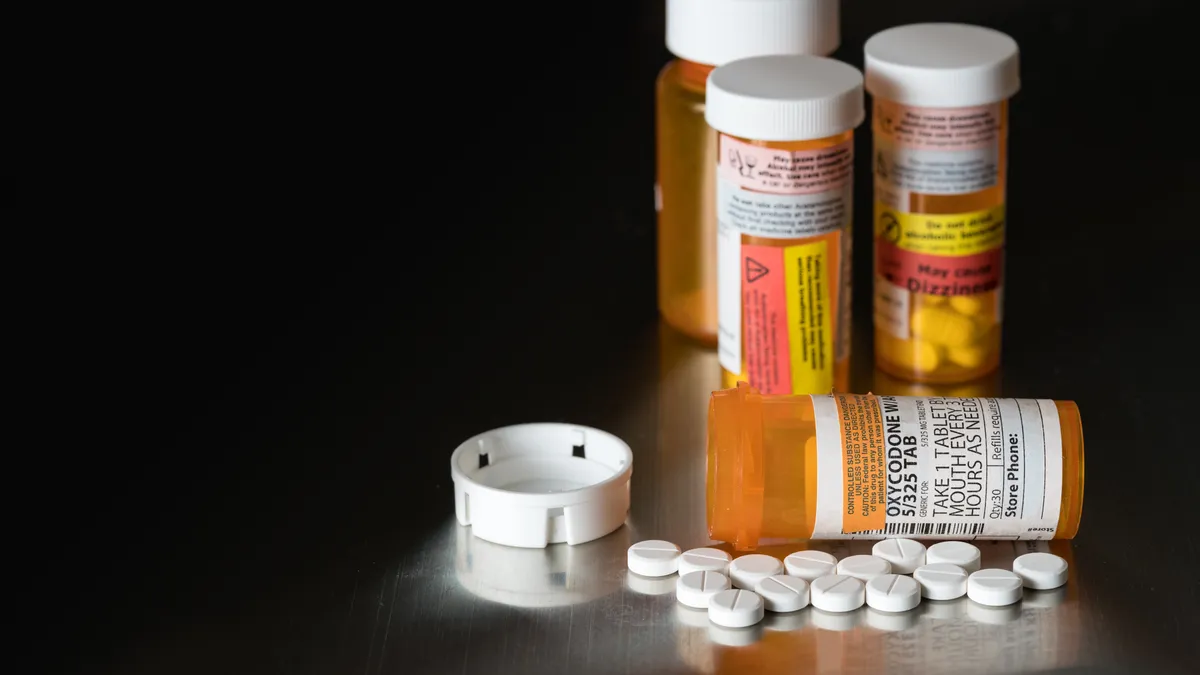As the baby boomer generation retires out of the workforce, many companies are struggling to fill open positions. In areas of the country where illicit drug use is rampant, the opioid epidemic is doing more than destroying individuals and families — it is threatening to shut down manufacturing plants and whole industries as employees and potential hires succumb to drug abuse and addiction.
The opioid epidemic has had a staggering effect on workforce participation, particularly for men ages 25 to 54. At 88.4% participation, the amount of men in the labor pool is only slightly higher than its all-time low in 2014. Opioid use has become a key factor why “prime age” workers, primarily men, are unwilling or unable to find work, according to a Goldman Sachs economist cited by CNN.
In a study published by a former White House economist, approximately 1.8 million workers did not participate in the labor force at the beginning of 2016; almost half of respondents, over 880,000 individuals, admitted they had taken an opioid the day before being surveyed.
For American employers, the situation has become dire. Some report that between 25% and 50% of qualified applicants can’t pass a routine drug test. For those in the manufacturing industry, a sector in which diminished capacity can be fatal, employers simply cannot take the risk.
Jobs remain unfilled, new orders are refused, and the toll of opioid abuse trickles throughout the company and the community. The CDC reported more than 15,000 opioid deaths in 2015.
Costs and Hidden Costs
According to a study by Castlight Health, one-third of prescription painkillers paid for by employer-funded plans are being abused. Workers who abuse painkillers cost their companies double the medical costs of non-abusers. Across the country, it’s estimated employers lose $10 billion per year due to lost productivity and absenteeism because of drug abuse.
Companies are also seeing increased insurance costs due to the epidemic. Covering the cost of health insurance for employees and their families, one company in Ohio had to spend $250,000 in the last three years for drug treatment for five employee dependents. An additional $300,000 was expended for three months of neonatal intensive care treatment for a family member who gave birth to an opioid-addicted child.
Prescreening on the rise
Carl Johnson, President of Cleared Match, an employment screening and investigative company, noted the striking difference in requests for pre-employment drug testing. “In the last four months, we have seen a 30% increase in employers asking us about drug testing,” he said. “Normally employers are concerned if the applicant has a criminal record or a credit risk, but they are now concerned with onsite drug use, even in jobs that are at the executive level.”
In the past, opiate testing was an option for most drug screenings as employers believed it could recognize a heroin user. Today, because of the access to prescription opioids, employers are stressing the need to test for the substance during pre-employment screening.
Johnson finds 20% of those screened are not passing the test. Further complicating screening are states where recreational marijuana use is legalized. Employers are placed in a difficult situation: because the drug lasts for weeks in the system, it’s impossible to discern whether the applicant used the drugs over the weekend or on their way to the testing. For manufacturing jobs particularly, the risk is too high to hire.
For current employees, Johnson adds, “Opiates are a serious concern, so much so [that] we are seeing an uptick in employers asking us to do random drug testing. We received 141 requests for a random drug test for the month of July.”
Creative solutions
The crisis is so significant that the Trump administration launched the Presidential Opioid Commission to study the effect opioids are having on Americans. Its recommendations: waive limits on Medicaid access to residential addiction treatment; expand access to alternative medicines that treat opioid addiction; suggest legislative measures; and provide naloxone, a drug that reverses opioid overdoses, to police. The commission will continue to study the matter.
But for many companies, the challenge of staying open without qualified workers has meant getting creative now.
The New York Times reported that at the Ohio manufacturer mentioned above, Warren Fabricating & Machining, 40% of applicants are disqualified from employment based on a failed drug test. In response, it created an apprentice program, deciding it was worth the time and money to train sober candidates, instead of continuing to come up empty handed in its search for skilled applicants.
Another employer, Thyssenkrupp North America, told the Times that it has turned to staffing companies that pre-screen workers. A third, a roofing company, has partnered with a nonprofit that provides opioid treatment and job training.
Another Ohio manufacturer told Linkedin that it doesn’t even bother taking job ads down anymore; turnover is so high because of opioid abuse that they need a constant flow of applicants. But it’s also working on a more permanent, creative fix: working with engineering students at a local college to develop machines that can automate tasks, drastically reducing the number of humans employees needed.
Still more have found success working with parolees, who may be required to remain drug-free as a condition of their release.
For many employers, hiring unskilled workers, using an employment agency for factory floor jobs or actively seeking out former addicts would have been unheard of in the past; now, however, they have few other choices. The problem is deeply entrenched in pharmaceutical, insurance and healthcare policies, meaning solutions will be tough to implement. But employers are already working to get more involved in healthcare in order to bring general costs down. Companies may soon be stepping in as a key partner as various groups seek to end the epidemic.




















